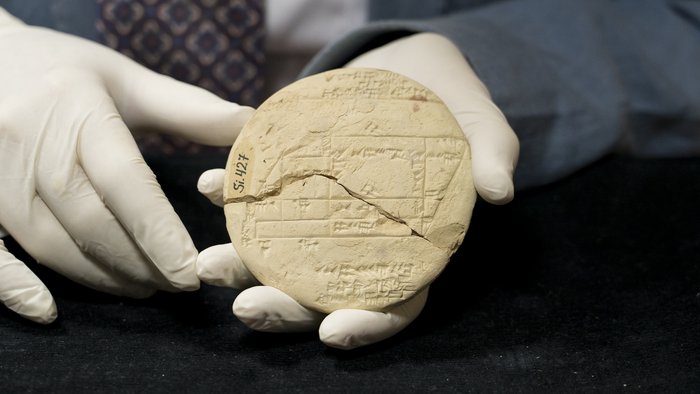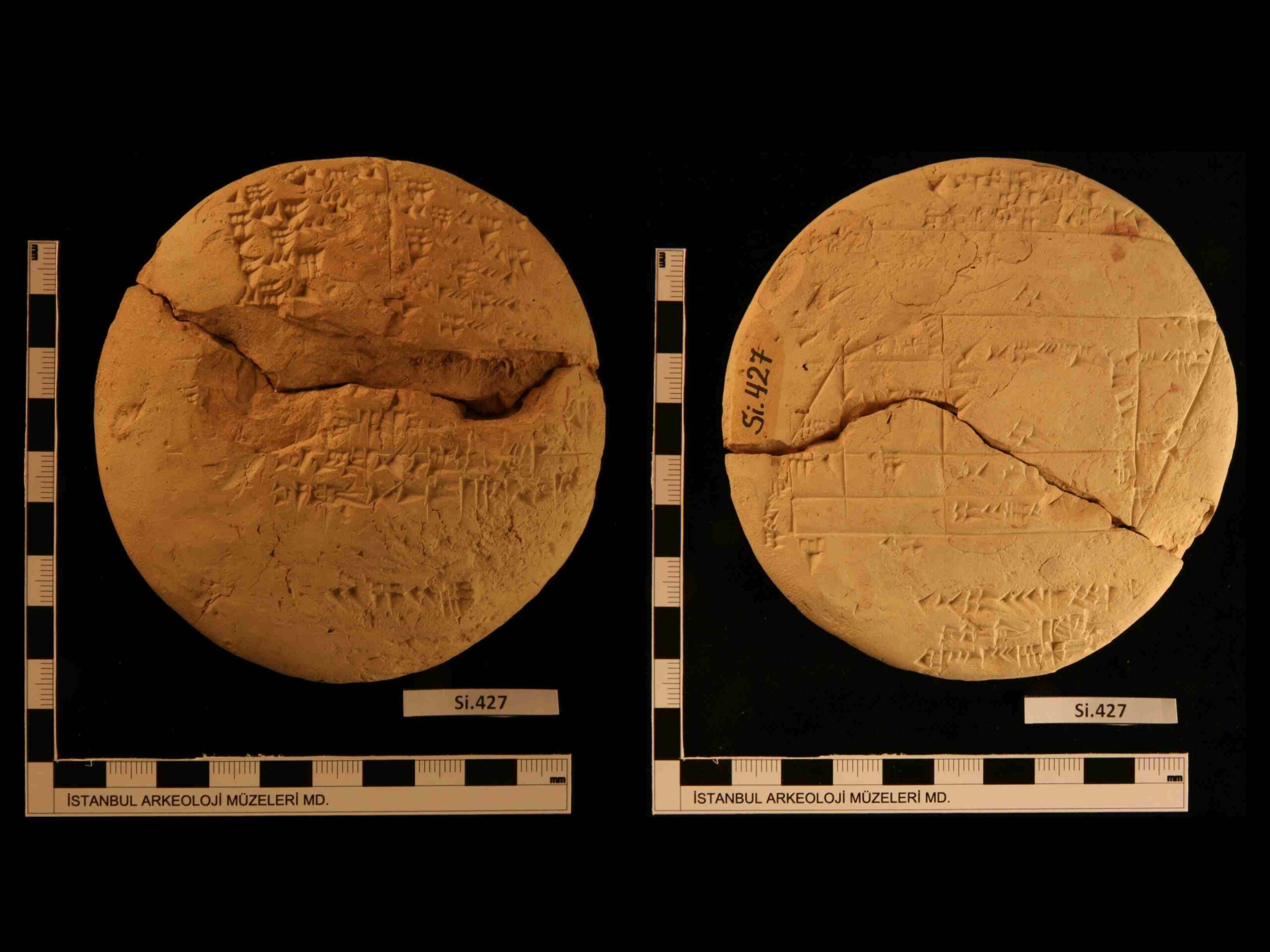On a 3,700-year-old Babylonian clay tablet, an Australian mathematician found what might be the oldest known example of applied geometry. The tablet, known as Si.427, includes a field plan that delineates the borders of certain property.

The tablet was unearthed in late 19th century Iraq and dates from the Old Babylonian era between 1900 and 1600 BCE. It had been held at the Istanbul Archaeological Museum until being discovered by Dr. Daniel Mansfield of the University of New South Wales.
Mansfield and Norman Wildberger, an associate professor at UNSW, earlier discovered another Babylonian tablet that had the world’s oldest and most precise trigonometric table. They thought at the time that the tablet had a practical function, maybe in surveying or building.
Plimpton 322, a tablet, represented right-angle triangles using Pythagorean triples: three whole numbers in which the sum of the squares of the first two equals the square of the third — for example, 32 + 42 = 52.
“You don’t come up with trigonometry by mistake; you’re generally doing something practical,” Mansfield explained. Plimpton 322 inspired him to seek out additional tablets from the same time period that contained Pythagorean triples, which finally led him to Si.427.
“Si.427 is about a piece of land that is for sale,” Mansfield explained. The tablet’s cuneiform lettering, with its distinctive wedge-shaped indentations, portrays a field with marshy regions, as well as a threshing floor and nearby tower.
According to Mansfield, the rectangles showing the field had opposing sides of identical length, implying that surveyors at the time found a technique to construct perpendicular lines more accurately than before.

“You have private folks attempting to figure out where their property boundaries are, just as we do today, and the surveyor comes out, but instead of utilising GPS equipment, they use Pythagorean triples. Once you grasp what Pythagorean triples are, your culture has attained a certain degree of mathematical sophistication,” Mansfield explained.
Three Pythagorean triples are found in Si.427: 3, 4, 5, 8, 15, 17, and 5, 12, 13 (twice) and predates the Greek mathematician Pythagoras by more than 1,000 years. It is the sole known example of an OB cadastral document and one of the oldest known mathematical artefacts.

The Babylonians employed a base 60 number system, which is comparable to how we record time today, making it impossible to work with prime numbers greater than five.
Si.427 was discovered at an era of growing private property ownership, according to a research published in the journal Foundations of Science. “Now that we know what issue the Babylonians were attempting to solve, it recolors all of the mathematical tablets from this period,” Mansfield explained.
“You see mathematics being created to meet the demands of the time.” One aspect of Si.427 that perplexes Mansfield is the sexagesimal number “25:29” – equivalent to 25 minutes and 29 seconds – inscribed in big letters on the tablet’s back.
“Was that part of a calculation that they ran? Is it anything I haven’t seen before? Is it some kind of measurement? ” he explained. “It irritates me because there is so much about the tablet that I understand. I’ve given up on figuring out what that one is.”




